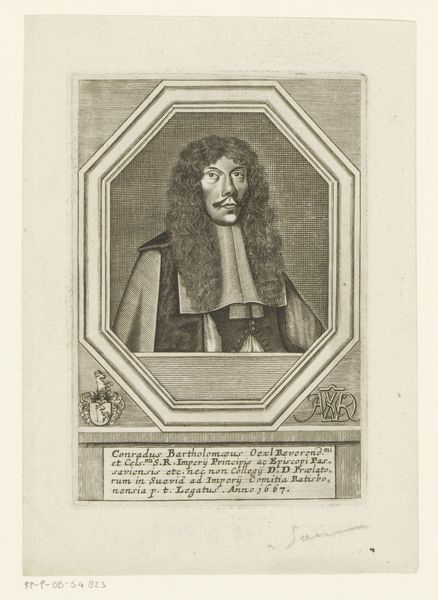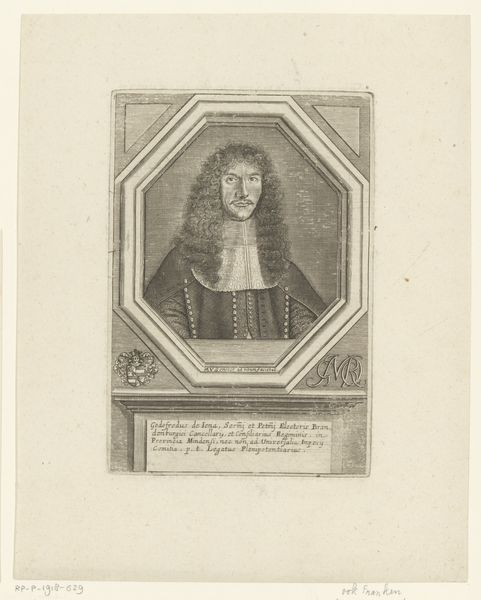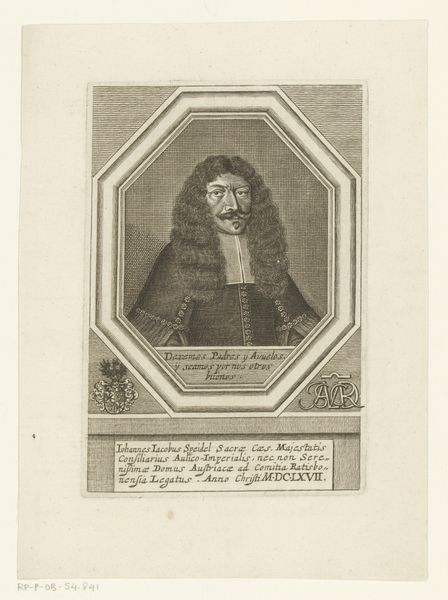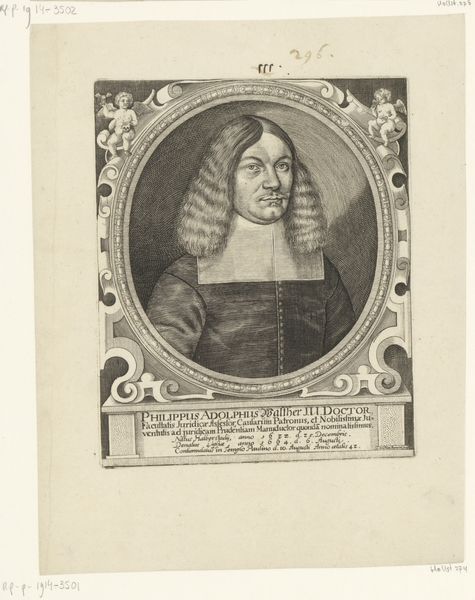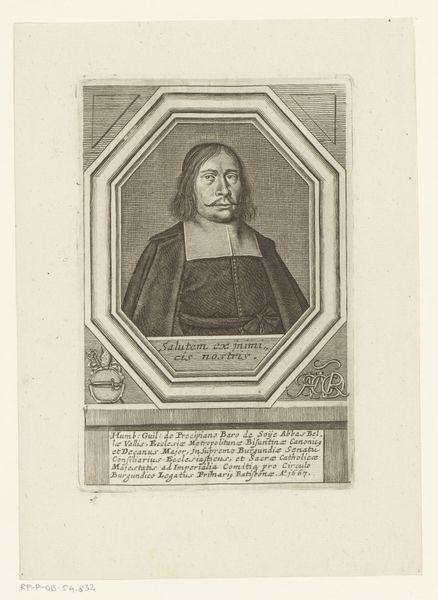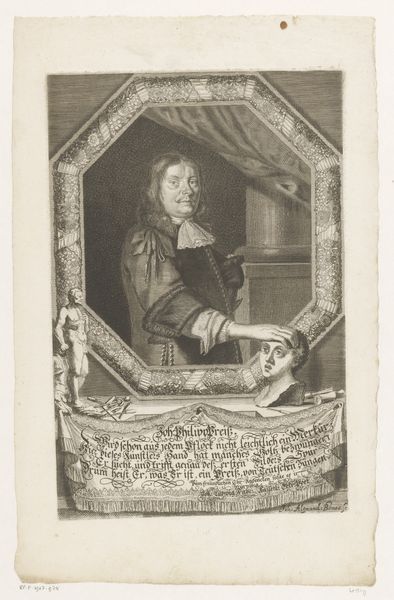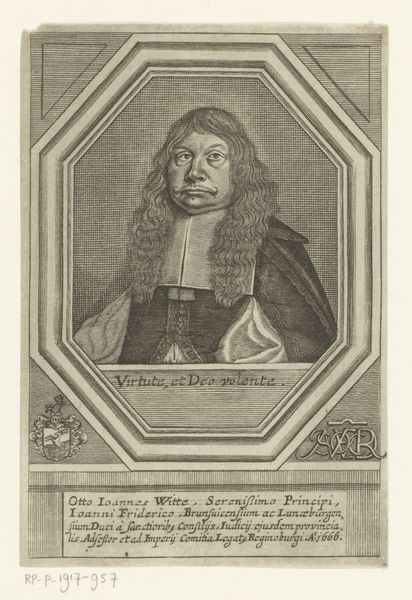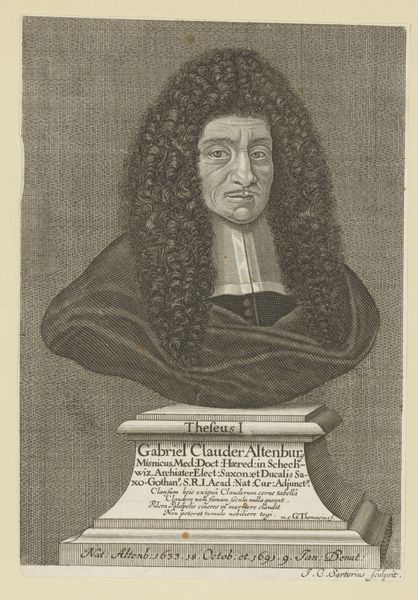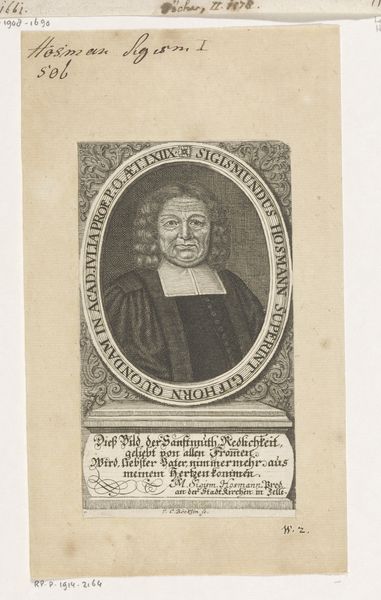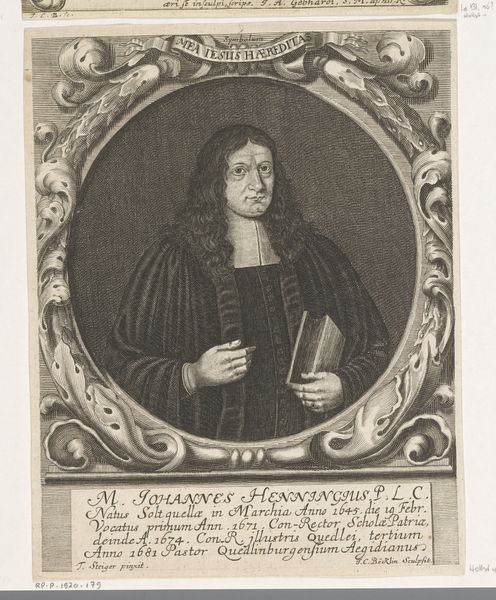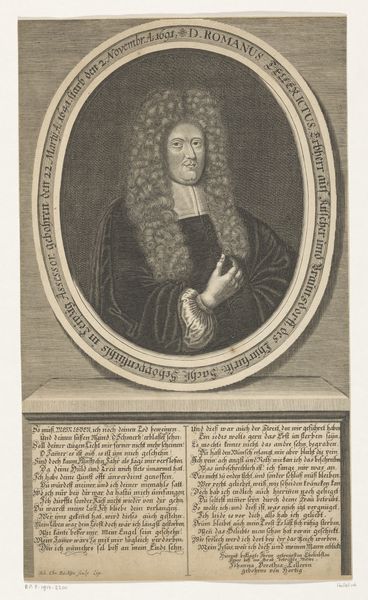
paper, engraving
#
portrait
#
baroque
#
paper
#
engraving
Dimensions: height 153 mm, width 105 mm
Copyright: Rijks Museum: Open Domain
Editor: So, this is "Portret van Jean Monnet de Reinenberg," an engraving on paper made in 1667 by Matthias van Sommer. I'm struck by its formality. It feels very...buttoned-up, quite literally! What stands out to you? Curator: It’s fascinating to consider how portraits like these functioned within 17th-century power structures. Beyond the individual, the piece speaks to the visual language of authority and status during a time of intense religious and political conflict. The Latin inscription, "fatis contraria fata," hints at the subject navigating opposing forces, likely within the Catholic Church during the Counter-Reformation. Do you notice how his gaze is directed? Editor: Yes, he looks directly at the viewer, seemingly very self-assured. But the formal attire and rigid pose almost feel like a performance. Was portraiture often used in this way? Curator: Absolutely. Portraiture became a tool for self-fashioning, a way to project a specific image of oneself—usually one of power, piety, or wealth. Think about who had access to these portraits: likely other elites, reinforcing social hierarchies. Moreover, the detailed rendering via engraving elevates the sitter's importance. What are your thoughts on that specific aspect of medium formality as being connected to representation here? Editor: That’s a great point. The precision of the engraving reinforces the sense of control and careful construction of image. The contrast to painting with brush strokes really emphasizes a desire for presenting one's self through accuracy. Curator: Exactly. So, considering this piece through a lens of identity performance within historical and religious power dynamics reveals layers beyond a simple depiction of an individual. I feel like this particular perspective reminds us that portraits can be seen as deliberate political acts, shaped by and reinforcing the structures around them. Editor: That's given me so much to consider about the relationship between art, power, and personal expression. Curator: And, I've now further appreciated the complex ties between artistic materials and image representation.
Comments
No comments
Be the first to comment and join the conversation on the ultimate creative platform.
